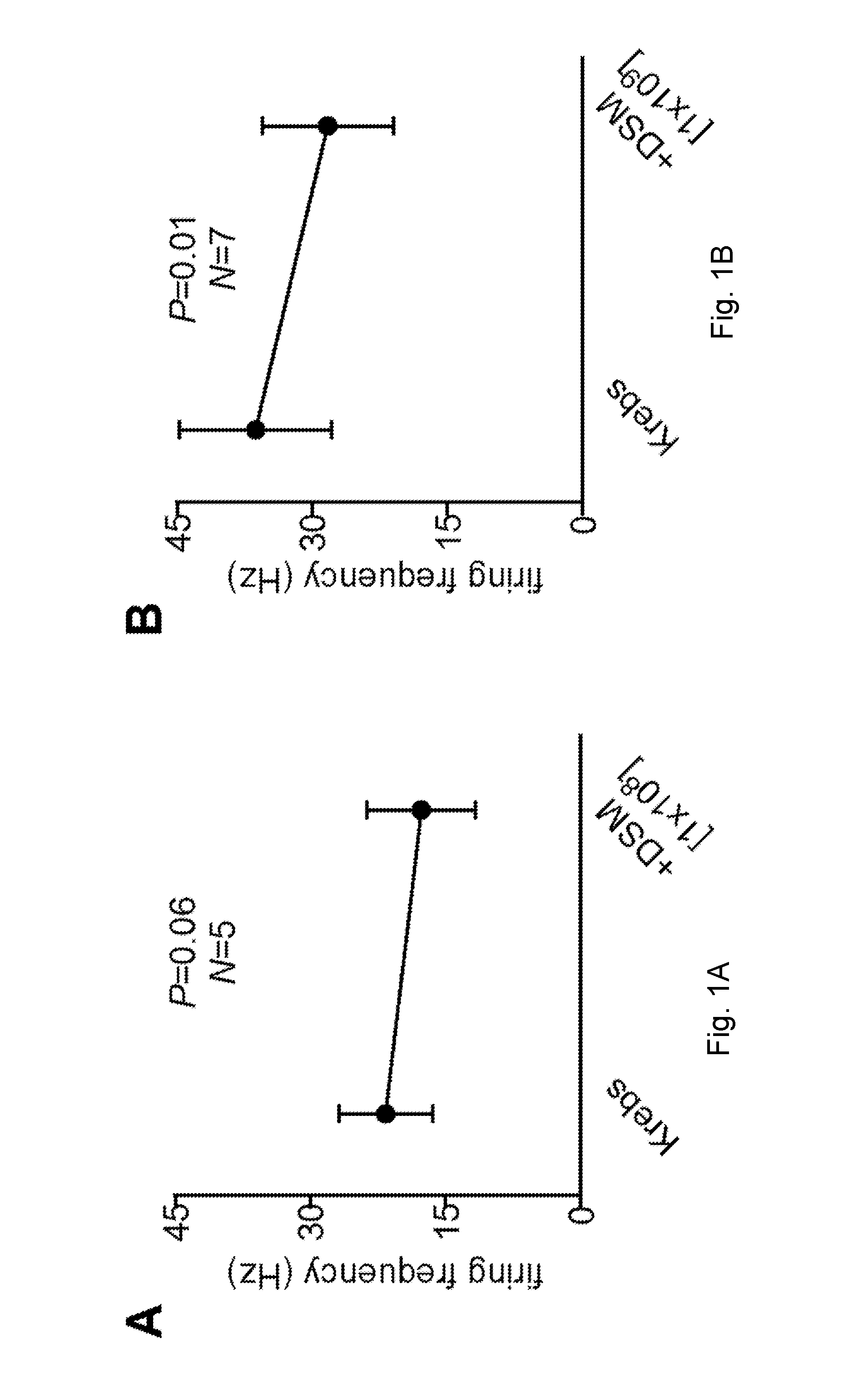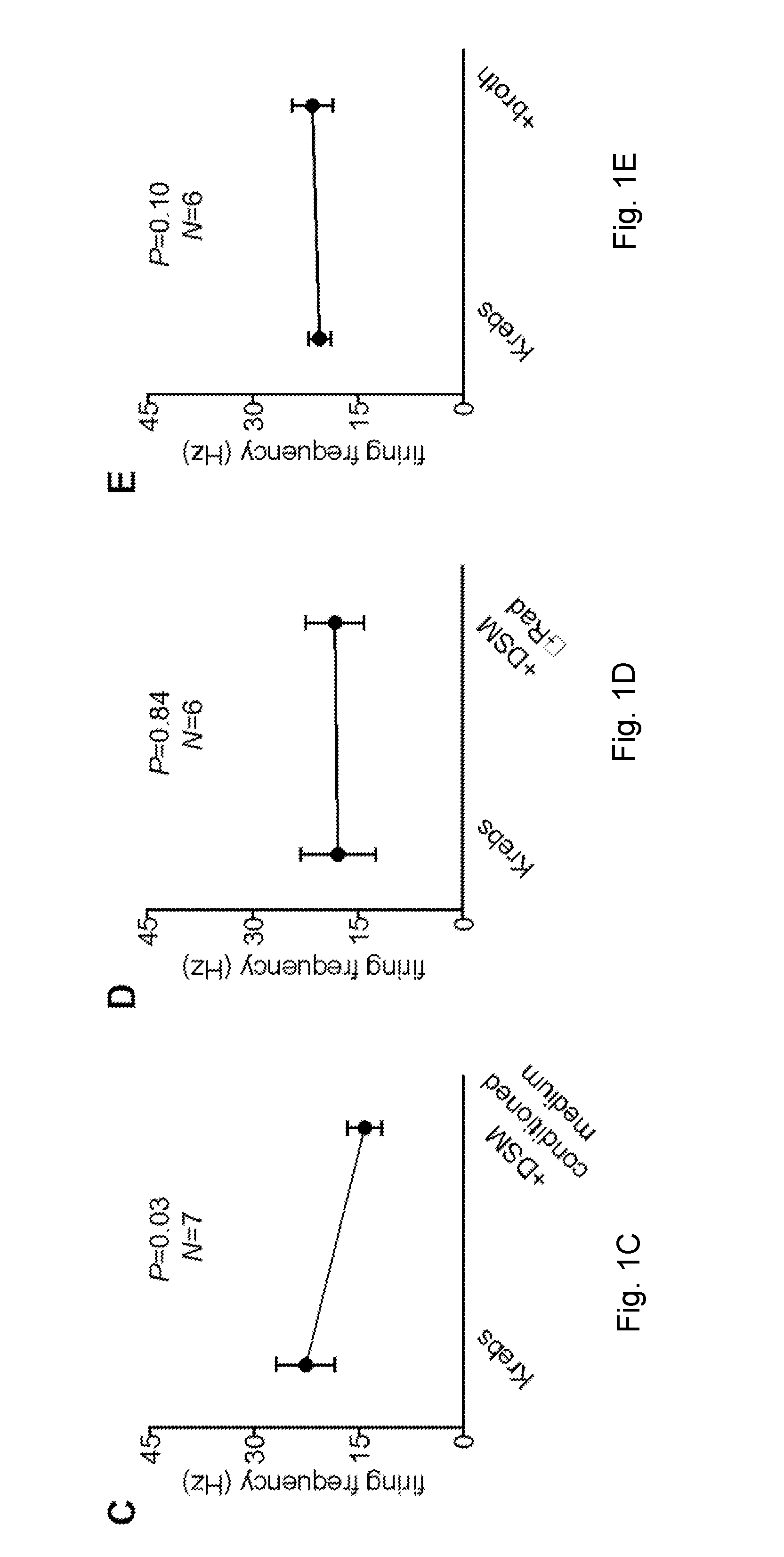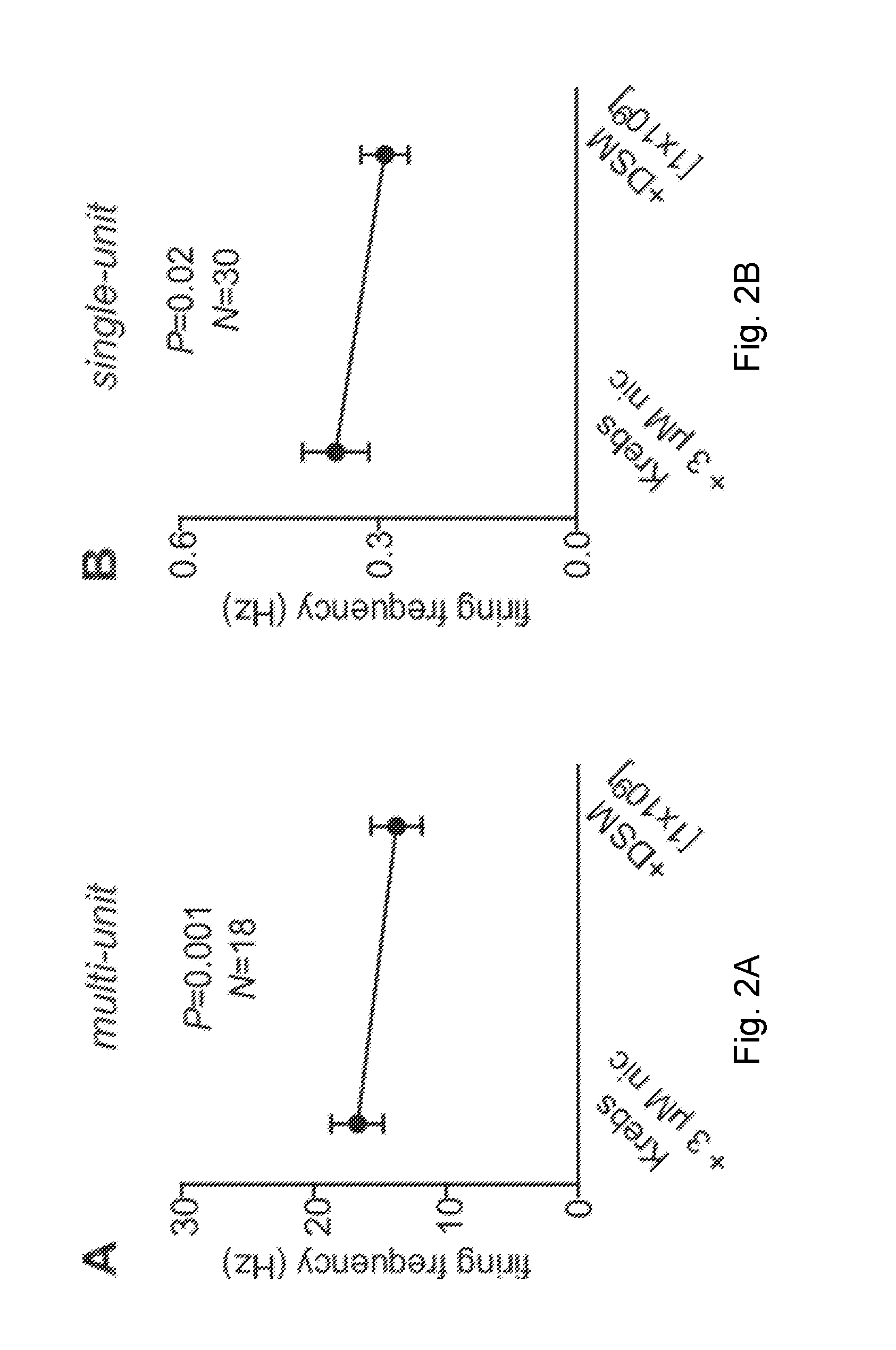Selection of Agents Modulating Gastrointestinal Pain
a technology of gastrointestinal pain and agents, applied in the field of gastrointestinal pain modulation, can solve the problems of complex contraction and relaxation patterns necessary for proper motility of the gastrointestinal tract, accompanied by lower abdominal pain, and distressing infants, parents, involved healthcare professionals, etc., and achieve the effect of reducing or preventing gastrointestinal pain
- Summary
- Abstract
- Description
- Claims
- Application Information
AI Technical Summary
Benefits of technology
Problems solved by technology
Method used
Image
Examples
example 1
Mesenteric Nerve Bundle Experiments
Extracellular Recordings
[0166]Adult male Swiss Webster mice (20-30 g) were procured from Charles River Laboratories (Wilmington, Mass.). The mice were killed by cervical dislocation. All ensuing procedures were ex vivo.
[0167]Segments of distal jejunum (˜2.5 cm) with attached mesenteric tissue were removed from freshly killed animals and placed in a Sylgard-coated Petri dish filled with Krebs buffer (in mM): 118 NaCl, 4.8 KCl, 25 NaHCO3, 1.0 NaH2PO4, 1.2 MgSO4, 11.1 glucose, and 2.5 CaCl2 bubbled with carbogen (95% 02-5% CO2). The oral and anal ends of each segment were cannulated with plastic tubing and emptied. The tissue was pinned to the Sylgard, and the mesenteric nerve bundle exposed. The Petri dish was placed onto the stage of an inverted microscope and the lumen gravity perfused at 0.5-1 ml / min with oxygenated Krebs or Krebs with additives (Perez-Burgos A., Wang B et al., American journal of physiology Gastrointestinal and liver physiology 2...
example 2
DSM 17938 Blocked the Ca2+ Rise Induced by Capsaicin in DRG Neuronal Primary Cultures
Dorsal Root Ganglion (DRG) Primary Cultures
[0177]The spinal column was removed from the body, transferred to a beaker containing ice-cold Krebs, and bisected longitudinally. DRG were exposed and collected from the thoracolumbar levels. Whole DRG were washed twice with sterile Leibovitz's L-15 medium (GIBCO, Gaithersburg, Md.), and incubated for 40 min in collagenase type 1 at 1 mg / ml (Sigma-Aldrich; Oakville, ON, Canada) and 0.5 ml trypsin (0.25%, GIBCO) in 20 ml L-15 at 37° C. After further addition of 5 ml L-15 containing 10% fetal bovine serum (FBS, GIBCO), the ganglia were centrifuged for 5 min at 1,000 rpm, then washed twice with growth medium (L-15, containing 10% FBS, 1% Penicillin / Streptomycin / Glutamine, 1% HEPES and 1% Na Pyruvate). The DRG were placed in 2 ml of growth medium and triturated 10 times. The ganglia were then centrifuged for 10 s at 500 rpm and the supernatant transferred to a...
example 3
DSM 17938 Inhibited Heart Rate Slowing Evoked by Gastric Distension
[0180]A total of 17 rats were assigned to 2 groups. Upon arrival, rats were allowed to acclimatize for 1 week followed by handling for 1 week (10 min / d) to minimize stress effects during experiments. Rats were gavaged each morning for 9 d with either 0.2 ml (1×109 cfu / ml) live DSM 17938 in Krebs or only Krebs as control (vehicle). The methods for GD have been previously published (Tougas, Wang, American Journal of Physiology 1999; 277:R272-8). In brief, rats were fasted overnight, anesthetized with a mixture of ketamine hydrochloride (75 mg / kg body weight) and xylazine (10 mg / kg body weight) intraperitoneally. Supplemental anesthesia was given as necessary. After a mid-line laparotomy, a distension device consisting of a ball-shaped gastric balloon (2-cm i.d.) affixed to a Teflon catheter (20 cm) was inserted into the stomach through a small incision in the proximal duodenum and connected to a barostat system (Disten...
PUM
| Property | Measurement | Unit |
|---|---|---|
| temperatures | aaaaa | aaaaa |
| pressure | aaaaa | aaaaa |
| pressure | aaaaa | aaaaa |
Abstract
Description
Claims
Application Information
 Login to view more
Login to view more - R&D Engineer
- R&D Manager
- IP Professional
- Industry Leading Data Capabilities
- Powerful AI technology
- Patent DNA Extraction
Browse by: Latest US Patents, China's latest patents, Technical Efficacy Thesaurus, Application Domain, Technology Topic.
© 2024 PatSnap. All rights reserved.Legal|Privacy policy|Modern Slavery Act Transparency Statement|Sitemap



